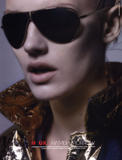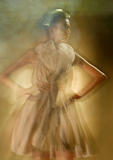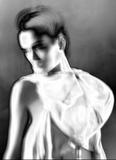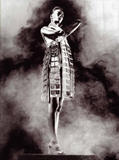icbeautifulpeepl
Member
- Joined
- Jan 29, 2006
- Messages
- 14
- Reaction score
- 0
Thanks flyingace, I love their style!

 the last shot
the last shotfrom studiodaily.comIn-camera light painting for BMW
In the new spot for BMW, the directorial duo of Nick Thornton-Jones & Warren Du Preez from production company Wanted Films transformed their signature style of painting with light that has garnered them acclaim in the print world into the realm of motion pictures, a move that was fraught with creative and technical challenges.
“Just as a mantra, a lot of our work over the years has been based around light and light exploration, inventive and alternative, hyper-visual light,” notes Du Preez. “So for us it was a natural process to take what we do on a stills capacity, which is 99 percent of the time captured in-camera. So the challenge was for us to retain as much of that authenticity behind the capture process.”
But of course before they could start the job they had to be awarded the job by the agency (WCRS), which has its own obstacles for the creators of such abstract images.
“When you’re trying to do something visual, especially something abstract with light, it’s a very hard thing to storyboard or describe or sketch,” explains Thornton-Jones. “To find shots that are adventurous and dynamic, you really can’t sketch it out before you shoot them, you are just sort of doing it. We’re versed in that language and that way of working but to others it can seem like you are shooting it on a wing and a prayer.”
Du Preez adds, “We did a video treatment but our message to the creatives was that they either let us go and do our thing and let us explore light, because that is what we do and why you have come to us, or we don’t do the job. If there’s going to be a halfway house on this we are not going to be able to do it. So from the beginning we had this mandate which allowed us to step forward with conviction and to execute our vision.”
While the duo has for years closely guarded their technical and creative secrets about how exactly they accomplish their light paintings, they concede that it is essentially a simple process of moving light in space, timed with the exposure of the still camera. But much of the technical principles they have discovered over the years in print could not be applied, or at least not in the same way, for motion picture.
“There’s a few sequences of light painting that are completely derivative from explorative work that we have done on a stills capacity,” Du Preez says. “When working in a stills world you can open the shutter, you can paint with light and create something quite magical and beautiful, and we know how to do that. When you get into the motion picture process obviously that becomes complex. That was our first challenge: Understanding how we could replicate something that we achieved in a stills capacity in a live action motion capacity.
Their research in how they could accomplish this led them to a solution that combines principles of stills and motion image photography.
“We did a lot of research and we ended up coming across Dayton Taylor, who’s got Time Track, the rig that used in The Matrix for those slow-motion shots,” explains Du Press. “Then we had a succession of meetings with DP Dan Landin who is a fantastic DP and is a very technically sound as well as very creative. We met with Dayton and conceived that we could light paint using certain rigs with Time Track and choreographed elements by balancing the amount of time the shutter was open to the time you painted and the light traveled over a certain distance.”
And to put it simply, that was all there was to it. To each question about a specific moment in the spot about whether it was created in a 2D or 3D software program, the answer was always the same, “No, that’s all light painting,” exclaims Thornton-Jones. “Ninety-five percent of it was all in-camera and there is not one shot that is completely CG. All we used 2D and 3D effects for was to add a little bit of depth to some of the lighting and we used Flame to stabilize some shots.”
Even shots like the one with the sparks shooting onto the car were created on set.
“That was an M6 vertically suspended from the ceiling,” explains Thornton-Jones. “That took nearly four days to get three takes, each that we used different elements and combined together. All in-camera. The finessing of that was maybe two weeks in Flame on getting the shot stabilized.”
But accomplishing all these effects in-camera, as opposed to creating in a computer, which they admit could likely make things a bit easier, is more than just a matter of pride for the directing duo.
“All that you see is in-camera and that is what makes it look interesting,” Thornton-Jones declares. “Some VFX guys we’ve worked with have come with us and told us that they’ve been able to replicate our light painting in CG. We saw it and it looked beautiful but it just was too perfect. We want to keep that imperfection where you actually do believe it. So many commercials we see are so polished and so constructed that it isn’t alive. So there’s a real organic sense of creation from us picking out the lights we wanted to use. To try and keep the energy moving instead of this prescribed sense of how something could be lit in CG. That’s not to say in post we didn’t sneak in an extra light or two.”
Du Preez adds, “All we did was some Flame to finesse certain shots and added some particle-driven CG to emulate what we did in-camera because it allows you to add a bit of depth. But if we didn’t capture it in camera we didn’t create it in CG. There’s not one moment in the film that is CG.”
I found out what it is, GQ style fw 06/07GQ style (don't know which issue)




 [URL=http://img12.imagevenue.com/img.php?image=14385_49620610_122_721lo.jpg]
[URL=http://img12.imagevenue.com/img.php?image=14385_49620610_122_721lo.jpg] [/URL]
[/URL] 






